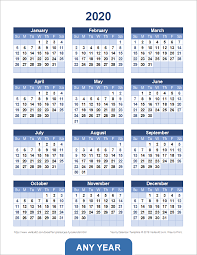Mastering Your Schedule: The Ultimate Guide to Calendar Management

The Importance of Calendars in Our Daily Lives
Calendars play a crucial role in helping us organize our lives and stay on track with our schedules. From ancient civilizations to modern societies, calendars have been used to mark time, plan events, and coordinate activities.
One of the key functions of a calendar is to provide a visual representation of time. By dividing days, weeks, months, and years into manageable units, calendars help us understand the passage of time and plan for the future. They serve as a tool for setting goals, scheduling appointments, and managing deadlines.
In addition to practical uses, calendars also have cultural and religious significance. Many holidays and festivals are based on specific dates in the calendar year. For example, religious observances such as Christmas and Ramadan are tied to specific dates on the calendar.
Calendars come in various forms, including paper calendars, digital calendars on smartphones or computers, and wall calendars. Each type offers its own benefits in terms of portability, accessibility, and customization.
Overall, calendars are essential tools that help us navigate our busy lives and make the most of our time. By staying organized and keeping track of important dates and events, we can ensure that we stay productive and focused on our goals.
Understanding Calendars: Key Questions Answered
- What is a calendar and why is it important?
- How many months are in a year?
- What is the difference between a lunar calendar and a solar calendar?
- Why does the number of days in each month vary?
- How do leap years affect the calendar?
What is a calendar and why is it important?
A calendar is a system of organizing days based on a specific cycle, typically divided into days, weeks, months, and years. It serves as a tool for tracking time, scheduling events, and planning activities. Calendars are important because they help individuals and societies stay organized, set goals, and manage their time effectively. By providing a visual representation of time passing, calendars enable us to anticipate future events, meet deadlines, and coordinate with others. Whether in personal or professional settings, calendars play a vital role in ensuring productivity and efficiency in our daily lives.
How many months are in a year?
In a year, there are twelve months. Each month typically consists of varying numbers of days, with some having 30 days and others 31. The exception is February, which has 28 days in common years and 29 days in leap years. The twelve months are January, February, March, April, May, June, July, August, September, October, November, and December. This division of time into months helps us track the passage of time and organize our activities throughout the year.
What is the difference between a lunar calendar and a solar calendar?
A frequently asked question regarding calendars is the difference between a lunar calendar and a solar calendar. A lunar calendar is based on the cycles of the moon, with months corresponding to the phases of the moon. This type of calendar typically has around 12 months in a year, with each month lasting roughly one lunar cycle. On the other hand, a solar calendar follows the cycle of the sun, with years based on the Earth’s orbit around the sun. Solar calendars usually have 365 days in a year, with an additional day added every four years (leap year) to account for the extra time it takes for Earth to complete its orbit. The main distinction between these two types of calendars lies in their basis of measurement – moon phases for lunar calendars and Earth’s orbit for solar calendars.
Why does the number of days in each month vary?
The variation in the number of days in each month is due to the historical development of different calendar systems. The modern Gregorian calendar, which is widely used today, has months with varying lengths to align with the astronomical cycles of the Earth’s orbit around the sun. This alignment results in some months having 30 or 31 days to approximate the length of a complete lunar cycle or match historical traditions, while February has 28 days (29 in leap years) to account for a solar year’s slightly longer duration. The irregularity in the number of days in each month reflects a blend of astronomical observations, cultural practices, and historical conventions that have evolved over time.
How do leap years affect the calendar?
Leap years play a crucial role in adjusting the calendar to account for the extra time it takes for the Earth to orbit around the sun. A leap year occurs every four years, adding an extra day to the month of February (29 days instead of 28). This additional day, known as February 29th, helps synchronize the calendar year with the astronomical year, which is approximately 365.25 days long. Without leap years, our calendar would gradually fall out of sync with the changing seasons. By incorporating leap years into the calendar system, we maintain alignment between our human-created timekeeping system and the natural cycles of the Earth’s orbit.




Leave a Comment